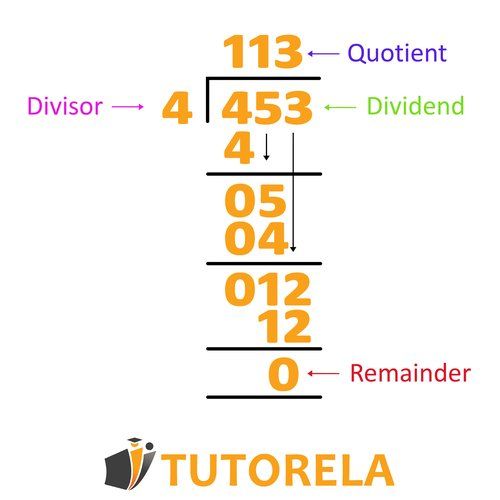Long division is a method used to divide large numbers by breaking down the process into a series of easier steps, dealing with one digit at a time. This technique is especially useful for dividing numbers that don’t divide evenly.
How to use Long Division?
We'll go step by step, dividing one digit at each step. We'll start with the digit on the left, write down the division result above the drawn line, and look for the remainder.
To do so, follow these steps:
- Divide: Determine how many times the divisor fits into the first few digits of the dividend.
- Multiply: Multiply the divisor by the quotient found in the first step and write the result under the dividend.
- Subtract: Subtract the result from the dividend to find the remainder.
- Bring Down: Bring down the next digit of the dividend and repeat the process.
- Repeat: Continue until all digits have been brought down and divided, resulting in a final quotient and possibly a remainder.
Long Division Notation
In long division, the notation is set up to clearly show the process of dividing step-by-step. The main elements include:
- Dividend: The number being divided. It is placed inside the long division symbol (also known as the “division bracket”).
- Divisor: The number by which you are dividing. This is placed outside the division bracket, on the left.
- Quotient: The result of the division. It is written on top of the division bracket, directly above each respective digit of the dividend as each part of the division is solved.
- Remainder: If the divisor does not divide the dividend evenly, you may have a remainder. This remainder is written after the quotient or represented as a decimal or fraction.

The division bracket helps structure the process, allowing you to handle one digit of the dividend at a time. As you solve each step, you bring down the next digit from the dividend, repeating the process until no digits remain. If there’s a remainder that does not go evenly into the divisor, it can be expressed next to the quotient or as a decimal by adding a zero and continuing the division process.